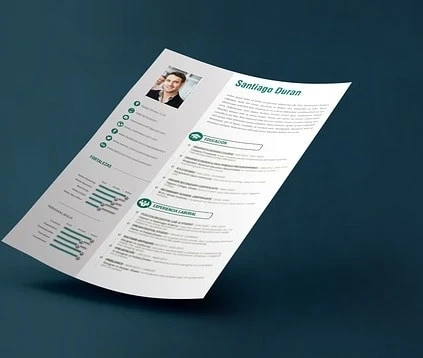
The Art of Writing Resumes For Professionals..
In order to take advantage of the resume for business advancement, you should understand what the resume is, how it has evolved, and how businesses now view it. The resume has a surprisingly long history as part of the evolution of modern commerce.
The first resume was created by Leonardo da Vinci in 1482. It was originally a form of letter of introduction, describing who the bearer is, what skills and experience come with him. The first resume was actually more like a covering letter addressed to the Duke of Milan highlighting da Vinci’s qualifications as the inventor of many innovative technologies of war.
Around 1500, a travelling English Lord offered what he called his “resume” to new acquaintances. This was a handwritten letter summarizing his abilities. The first resumes were considered semi-official documents of introduction carried around, much as we now carry business cards or license certifications. They were documents used to gain audiences to potential patrons, nobles or guildsmen.
Gradual change in the status of resume writing:
This form of semi-official paper resume was the status of resumes until the late 1930s. In 1937, The book, “Think and Grow Rich” was published by Napoleon-Hill. This book included, for the first time, a chapter called “Steps to Success” which included a section called “how to write a killer resume.” For the first time, the resume was moved out of the category of official unaltered document, to the status of personal promotion.
In the 1950s, the resume or “curriculum vitae” (CV), became formalized as a part of job applications. The strange thing about the new active resume was that it had the potential for personal promotion, but it retained an aura of what it had traditionally been, a list of accomplishments and skills.
In 1984, the first guides on how to write a resume started coming out. The increasing use of word processors made the writing and customization of resumes easier. Business practices began to change. The resume had to be more than a letter. The format became highly formalized.
The tightening rules buried the dual function of the resume even deeper. The resume was supposed to look like an objective description of skills and experience, The document carried the implicit understanding that it was a traditional letter of introduction. However, it had become more of a personal advertisement or promotion in disguise.
How resumes get read:
The resume is typically used as a first level screening device, to determine if a job applicant is a candidate for a position. The prospective employer compares the skill set described in the resume with the job description to determine a skill-set match. Then the resume is examined to determine how much actual experience the applicant has by adding up the from-to dates in desired skills areas. The resume is also used as a measure of temperament to determine if the applicant can be a good personal match to the setting.
Several important variables stand out:
- How steady is the job history. Are there many time gaps in the job history? Are there a lot of short-term employment periods or do most of the jobs last longer than a year.
- Does the training claimed by the applicant seem relevant to his or her job titles? Does the applicant have training which can be applied to the employer’s setting?
- How carefully is the resume done? Are there language, spelling, or neatness issues? Does the resume fit neatly into a traditional form? How creative is it?
- Does the applicant appear to want to work for the employer’s organization? What are the goals implied in the resume? Is the applicant too ambitious? Is the applicant ambitious or aggressive enough?
How to reformat your resume to get around problems:
Chronological format: Because of the tradition of the resume as a straightforward historical summary , the best form of resume is written in chronological form. If the first section of the resume provides a straightforward list of jobs held with start and end dates, and the dates represent a history of steady employment without gaps, that could make the best initial impression. It reinforces the notion of the resume as an official letter of introduction.
Skills format: However, many careers do not take that clean, linear, uninterrupted form. Some applicants opt to sell, not their straight employment history, but directly sell the skills they have to offer. These resumes become a list of documented skills. The skills are listed in descending order of importance or relevance. For each skill, the source of the skill and evidence for the skill is noted. What is the skill? Where did it come from? How can it be demonstrated in the history.
The letter resume: Some applicants opt to write their resumes as simple letters of introduction. These resumes really closely resemble the traditional resume form. They can be written in a business letter format. They simply express interest in a position. They might include some knowledge about the nature of the company applied to. They then present the ways in which the applicant can support or help the organization.
The resume is a selling tool in disguise. It must be written in a way that maintains its secret identity, but it can be subtly aimed to serve a self-promotional purpose.
Michael DeSafey is a leading executive recruiter for professionals in the construction, engineering and environmental industries. He is currently the President of Webuild Staffing www.webuildstaffing.com. To learn more about Michael or to follow his blog please visit www.michaeldesafey.com
